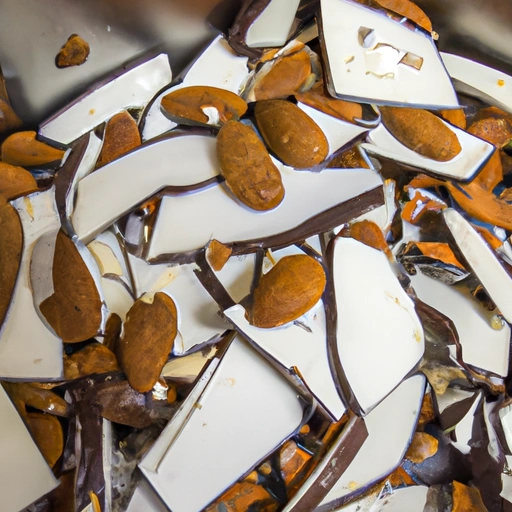Almond Bark
Description

Almond bark is a confectionery coating made primarily from vegetable fats, sugars, and flavorings, often resembling chocolate in appearance and texture. It is named 'bark' due to its typical use in making candy bark, where it is spread out and topped with nuts, dried fruits, or candy pieces. Unlike chocolate, however, almond bark generally does not contain cocoa butter and can be easier to work with as it does not require tempering.
Common uses
Typically used as a coating for candies, almond bark is also popular in decorative dessert preparations, such as chocolate molds, dipped fruits, and truffles. It is a sought-after ingredient around holidays for creating festive treats.
Nutritional value
Calories
Almond bark contains approximately 162 calories per ounce (28 grams/ 1 oz).
Protein
It generally provides less than 1 gram of protein per ounce.
Fat
Almond bark has about 14 grams of fat per ounce, most of which are saturated fats from its vegetable oil content.
Carbohydrates
Carbohydrate content is around 16 grams per ounce, predominantly from sugars.
Vitamins
Almond bark does not significantly contribute to daily vitamin intake.
Minerals
Depending on the brand and formulation, some almond barks may contain small amounts of calcium or iron.
Health benefits
As a confectionery item, almond bark is best enjoyed in moderation. The primary health benefit of almond bark is its potential use as a replacement for those with dairy allergies or lactose intolerance, as many brands are dairy-free.
Potential risks
Due to its high sugar and fat content, excessive consumption of almond bark can contribute to weight gain, and it should be limited in a balanced diet. It may also contain hydrogenated oils, which are associated with negative health impacts.
Common recipes
Almond bark is used in a variety of recipes such as chocolate bark, dipped strawberries, pretzels, and as a coating for truffles or cake pops.
Cooking methods
It can be melted in a microwave or double boiler and used as a dipping or drizzling sauce. It's also suitable for use in candy molds.
Pairing with other ingredients
Almond bark pairs well with nuts, dried fruits, cookies, pretzels, and popcorn, providing a sweet contrast to salty or savory flavors.
Summary
Almond bark is a versatile and easy-to-use confectionery product that can add a touch of sweetness and elegance to various dishes. While it's not a health food, it's a cherished ingredient for many bakers and candy makers around the world for creating delectable treats.